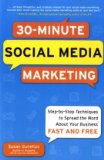Well-exercised writers are better writers
Have you resolved to exercise more? With that in mind, I’ve updated this list of free and low-cost online exercise classes that I originally created during the early months of the COVID-19 pandemic.
I am grateful to my writer friends who suggested these resources to me.
My current exercise favorites
My go-to website for low-impact cardio exercise is Team Body Project. The instructors are upbeat, they offer many different routines working on different body parts, and they seem to care about students doing their exercises right so the students will help—not hurt—themselves. I’m currently using the paid version of the website, but there is a free-with-registration version, and many of Team Body Project’s workouts appear on YouTube.
Through exercising on Zoom with friends, I’ve enjoyed Grow with Jo and Leslie Sansone’s Walk at Home videos.
Exercise in general
- Millionaire Hoy
- The PERFECT Home Workout
- Orangetheory offers a different free 30-minute workout daily
- FitOn, an app and website, offers live and on-demand workouts.
Barre
- Barre3—I really liked the first of this YouTube series, but the second video had lots of ads, which I found disruptive.
I pay for the version of Down Dog that includes yoga and barre.
Yoga
Do any of you know of good free Iyengar yoga classes? I really miss the Iyengar classes that I took at my gym that went out of business a couple years ago.
- Your Journey Yoga with Cheryl
- Yoga with Adriene—Adriene seems to have a yoga routine for any focus you might desire. One of my friends is doing Adriene’s 30-Day Yoga Challenge.
Workouts for older adults
- Go4Life—These exercises come from the National Institute on Aging at NIH.
- My elderly mother-in-law enjoyed the “exercise for seniors” videos from HASfit on YouTube. Here’s a link to one of them.
- SeniorShape Fitness
Workouts for kids
If you’re working at home, your work may benefit from keeping your kids well-exercised. Writer Cheryl Alkon told me about the BOKS Facebook page:
There is a program called BOKS that does exercise classes at school before school starts. I believe they are doing daily workouts on their Facebook page at noon. My nine-year-old daughter and I did one last week and it was effective—lots of squats and push-ups and running in place. We enjoyed it.
Additional resources
Well-exercised writers of the world, unite!
Please join me in striving to be a well-exercised writer! Exercising boosts my mood and helps me to focus on work. I hope it has positive effects for you, too.
Note: I updated this list in December 2022.
The image in the upper left is by Pexels from Pixabay.






